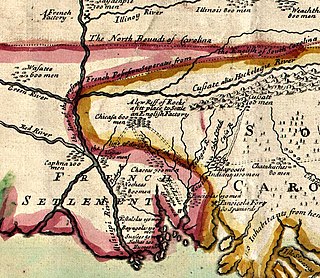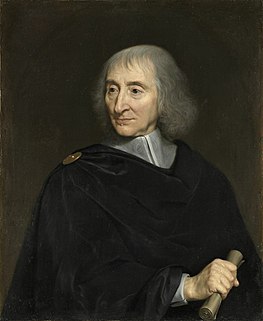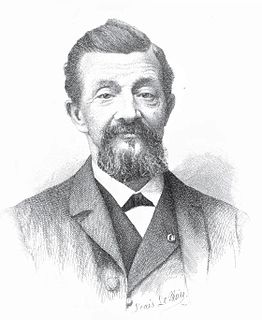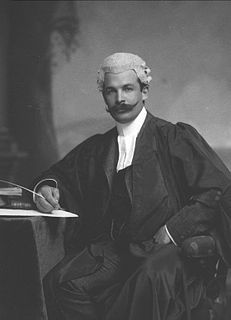Life
Mathieu Marais was born in Paris, in the rue du Bouloi. His baptismal certificate is dated of October 11 1665 at the Church of St Eustache of Paris. Because of the high infant mortality, infants were baptized the same day or a few days after their birth, so his date of birth was conjectured to be October 10. His father is Renault Marais, prosecutor at the Grand Châtelet, and his mother is Catherine-Françoise Billon. He have Mathieu Billon, Parisian bourgeois, and Claude Billon, daughter of Guillaume Billon, the King's cirier, for godparents. [2]

The Church of St Eustache, Paris is a church in the 1st arrondissement of Paris. The present building was built between 1532 and 1632.

Infant mortality is the death of young children under the age of 1. This death toll is measured by the infant mortality rate (IMR), which is the number of deaths of children under one year of age per 1000 live births. The under-five mortality rate, which is referred to as the child mortality rate, is also an important statistic, considering the infant mortality rate focuses only on children under one year of age.

A prosecutor is a legal representative of the prosecution in countries with either the common law adversarial system, or the civil law inquisitorial system. The prosecution is the legal party responsible for presenting the case in a criminal trial against an individual accused of breaking the law. Typically, the prosecutor represents the government in the case brought against the accused person.
He spent twelve years with the Jesuits, then became a lawyer the November 22 1688 before retiring in 1736. It was long thought that he had ended his career as bâtonnier, but it was actually Jean Marais (or Marays). [3] His nickname was "the lawyer of the women" (l'avocat des dames), because he pleaded for a lot of them. He aspired to French Academy. He was very fond of Jean de La Fontaine, and the wrote an Histoire de la vie et des ouvrages de M. de La Fontaine (History of The Life and Works of Mr. de La Fontaine) published in 1811 by Simon Chardon de La Rochette. He was in contact with several personalities of his time, including Nicolas Boileau, the Chancellor d'Aguesseau, the Cardinal Polignac, the Viscount Charles-Henri-Gaspard de Saulx of Tavannes, and also the financier Samuel Bernard.

1736 (MDCCXXXVI) was a leap year starting on Sunday of the Gregorian calendar and a leap year starting on Thursday of the Julian calendar, the 1736th year of the Common Era (CE) and Anno Domini (AD) designations, the 736th year of the 2nd millennium, the 36th year of the 18th century, and the 7th year of the 1730s decade. As of the start of 1736, the Gregorian calendar was 11 days ahead of the Julian calendar, which remained in localized use until 1923.
In some legal systems, the bâtonnier is the head of the legal profession.

Jean de La Fontaine was a French fabulist and one of the most widely read French poets of the 17th century. He is known above all for his Fables, which provided a model for subsequent fabulists across Europe and numerous alternative versions in France, and in French regional languages.
His greatest friend remains to be the president Bouhier to whom he sends, sick and dying, a letter on February 1 1737, where are written journals of his hand; he recommends keeping them in his library of manuscripts so that they do not fall into the wrong hands. He would have contributed to the Mercure galant for the criticism of Madame de Lambert about Mr. de Sacy's translation of Panegyric of Trajan by Pliny the Younger. As a friend of Pierre Bayle, he collaborated at the Historical and Critical Dictionary by writing the articles Henry III , Henry, Duke of Guise and Margaret, Queen of Navarre among others. [4] His funeral took place at the same St Eustache Church where he was baptized. [5]

Jean Bouhier was a French magistrate, jurisconsultus, historian, translator, bibliophile and scholar. He served as the first président à mortier to the parlement de Bourgogne from 1704 to 1728, when he resigned to devote himself to his historic and literary work following his 1727 election to the Académie française.

Louis-Isaac Lemaistre de Sacy, a priest of Port-Royal, was a theologian and French humanist. He is best known for his translation of the Bible, the most widespread French Bible in the 18th century, also known as the Bible de Port-Royal.

Gaius Plinius Caecilius Secundus, born Gaius Caecilius or Gaius Caecilius Cilo, better known as Pliny the Younger, was a lawyer, author, and magistrate of Ancient Rome. Pliny's uncle, Pliny the Elder, helped raise and educate him.

Augustin Barruel was a French publicist and Jesuit priest. He is now mostly known for setting forth the conspiracy theory involving the Bavarian Illuminati and the Jacobins in his book Memoirs Illustrating the History of Jacobinism published in 1797. In short, Barruel wrote that the French Revolution was planned and executed by the secret societies.

Jean François de Saint-Lambert was a French poet, philosopher and military officer.

Antoine Houdar de la Motte was a French author.

Jean-Pierre de Crousaz was a Swiss theologian and philosopher. He is now remembered more for his letters of commentary than his formal works.
Jean-Jacques François Marius Boisard was a French fabulist.
Claude Brossette, seigneur de Varennes d'Appetour was a French lawyer and writer. He was educated at the Collège de la Trinité in Lyon and joined the Jesuits before turning to law.

Gabriel-Mathieu Francois D'ceus de Clieu, naval officer, was the governor of Guadeloupe from 1737 to 1752 and the founder of Pointe-à-Pitre. He was awarded the rank of commander of the Royal and Military Order of Saint Louis.

Samuel Bernard, Count of Coubert (1725), was a French noble and financier.
Eustache Restout was a French architect, engraver, painter and Premonstratensian canon regular, belonging to the artistic Restout dynasty. At his death he was sub-prior of abbaye Saint-Martin de Mondaye - he had produced the plans on which that monastery was rebuilt and painted several paintings for it. His students included his nephew Jean II Restout.

Robert Arnauld d’Andilly was a Frenchconseiller d’État, specialising in financial questions, in the court of Marie de' Medici. By the elegance of his language, he was among the major poets, writers and translators of 17th century French classicism. A fervent Catholic, he played an important role in the history of Jansenism and was one of the Solitaires of Port-Royal-des-Champs. He was also renowned for his part in the development of the pruning of fruit trees, to which he was devoted.

Bernard de La Monnoye was a French lawyer, poet, philologue and critic, known chiefly for his carols Noei borguignon.
François Dominique de Barberie de Saint-Contest was a French Foreign Minister.

François Poilly, or François de Poilly, was a French engraver.
Marie Anne Victoire Pigeon d'Osangis was a French mathematician and writer.

Alphonse Wauters (1817–1898) was a Belgian archivist and historian.
Jean Claveret was a 17th-century French playwright, lawyer and translator of Cicero, Cornelius Nepos and Valerius Maximus.
Jean-Félicissime Adry was a 19th-century French bibliographer.
Madeleine-Angélique de Gomez née Poisson was a French author and playwright.
This page is based on this
Wikipedia article Text is available under the
CC BY-SA 4.0 license; additional terms may apply.
Images, videos and audio are available under their respective licenses.




















